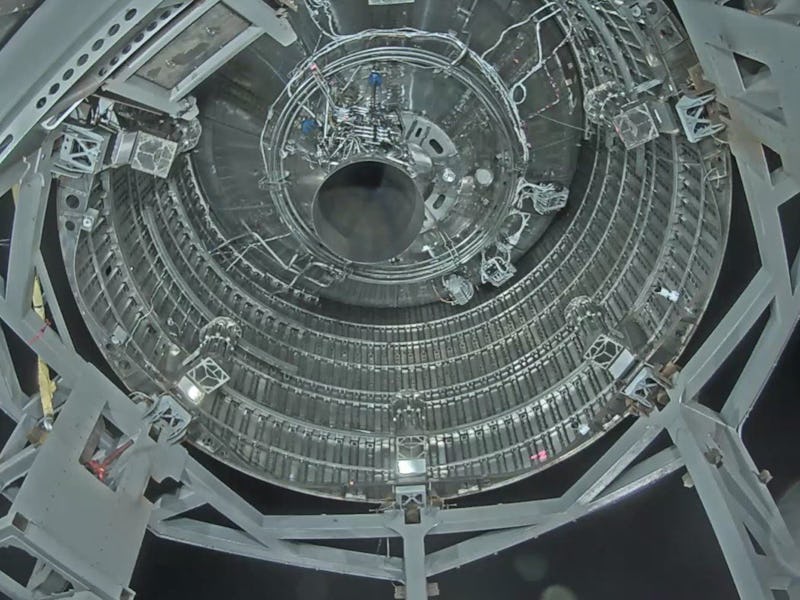SpaceX Starship: incredible Elon Musk photo shows the rocket’s true size
The giant ship has been captured in an image that demonstrates the scale of the Mars-bound ship.

The Starship, SpaceX's under-development ship for sending humans to Mars, has been captured in a new image that reveals its sheer size.
Ahead of a planned static test fire, CEO Elon Musk shared an image on Twitter Monday of the underside of the rocket, with a single Raptor engine attached. The final ship is expected to use six engines, paired with a Super Heavy booster adding up to 37 more that's designed to help the ship leave Earth. From there, it will be set to reach the moon, Mars and beyond.
The "SN4" prototype in the image is set for a static test fire that fires the engine at a stationary position, a precursor to a potential "hop test" that would see the prototype jump in the air. That test may be postponed, however, after Musk posted on Twitter that a Monday morning static fire "seems unlikely right now."
"SN4 🔥 soon," Musk posted on Twitter. "Raptor looks so smōl."
Musk's tweet.
It's the latest step toward a fully-reusable ship that can send humans to the moon, Mars and beyond, and Monday's photo also helps to demonstrate the sheer size of the ship in question. SpaceX has been upfront about the ship's size: a diameter of around 30 feet, a Starship measuring 164 feet high, a Super Heavy booster measuring around 229 feet, and a total system height of around 393 feet – figures that Musk has changed as the design has evolved.
But prototype models of the ship, under development at the Boca Chica facility in Texas, have been somewhat hard to visualize from far-away shots. Photos like these show the impressive design and indicate that it's clearly pretty big, but it's still hard to picture the exact size. This is a ship designed to transport 100 people into space – its size is one of its biggest breakthroughs.
The Starship from a distance.
But with this latest image of the Raptor attached to the underside, the viewer gets a clearer picture of the rocket's scale. Compare the Raptor attached there to the Raptors pictured in April, where the image shows a workspace with more common items that help visualize its size:
The three Raptors pictured.
With the size of the Raptor in mind, the Starship's size becomes easier to understand.
SN4 with the engine attached.
It's not the first time the public has had a visualized peek at the Starship's size. Back when it was known as "BFR," 3D modeler Reese Wilson produced a series of models in 2018 that showed the then-348-foot BFR against a series of landmarks:
Musk also revealed Monday that the Super Heavy, the booster designed to push the Starship out of the Earth's atmosphere, will pack 31 Raptor engines:
Will have 31 engines, not 37, no big fins and legs similar to ship. That thrust dome is the super hard part. Raptor SL thrust starts at 200 ton, but upgrades in the works for 250 ton.
At the firm's September 2019 event, Musk stated that the booster could use a minimum of 24 engines or a maximum of 37 engines, but 31 was likely the ideal figure. The official Starship website claims the booster will pack 37 engines, as demonstrated in an on-site mockup:
The Super Heavy booster visualized.
Musk's latest tweet, however, suggests the team is settling on 31 engines.
The Inverse analysis – The Starship is one huge machine, and Musk's tweet demonstrates its incredible size. The ship is expected to have around 1,000 cubic meters of cabin space, enough to send up to 100 humans into space with around two or three people per cabin. It's also designed to send over 150 tons of cargo into space with its alternate configuration. A more restricted 1,000-person version is expected to send people around the Earth within an hour. But while these numbers sound huge on paper, Monday's post brings home just how huge this ship is expected to be.